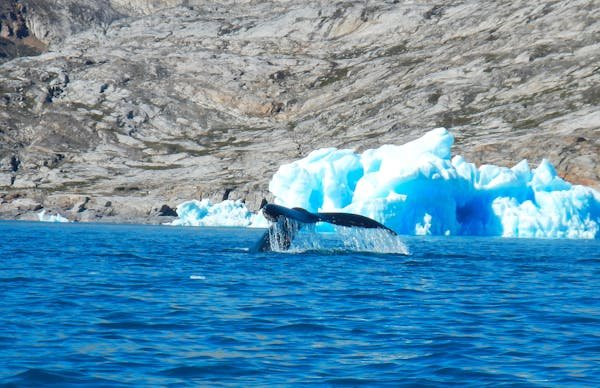Whale strandings, also known as beachings, occur when one or more whales wash ashore and become stranded on a beach. These events can be heart-wrenching, not only for the whales themselves but for the scientists, rescuers, and communities who work to save them. Despite decades of research, whale strandings remain a somewhat mysterious phenomenon, with various natural and human-induced factors potentially playing a role. This article explores the causes of whale strandings and how we can help mitigate their impact.
What Causes Whale Strandings?
Whale strandings have puzzled marine biologists for centuries. Although some of the causes are still under investigation, several factors have been identified:
- Navigation Errors
Whales rely on echolocation and the Earth’s magnetic fields to navigate. However, environmental factors can sometimes interfere with these abilities. For example, geomagnetic anomalies—variations in the Earth’s magnetic field—can disorient whales, leading them to shallow waters where they risk becoming stranded. - Injury or Illness
Whales suffering from injuries, infections, or parasites may become weak or disoriented, increasing the likelihood of beaching. A sick whale might head toward shallow waters as a form of self-protection, but if they end up on a beach, they may be unable to return to deeper water. - Human Activity
Naval exercises, seismic surveys, and underwater explosions (for military or industrial purposes) create loud noises that can disorient or harm whales. Some studies suggest that sonar interference may cause whales to surface too quickly, leading to decompression sickness (similar to “the bends” in human divers). Such disturbances can contribute to mass strandings or even individual incidents. - Toxic Algal Blooms
Harmful algal blooms (HABs), sometimes called “red tides,” can produce toxins that affect marine life. Whales and other marine animals that consume prey contaminated with these toxins may become disoriented, leading to strandings. - Climate Change and Habitat Shifts
As ocean temperatures rise due to climate change, prey migration patterns shift, causing whales to travel into unfamiliar or shallow waters. This movement can increase the chances of strandings, especially in regions they wouldn’t typically frequent. - Social Bonds
Some species of whales, like pilot whales, have strong social structures. If one whale in a pod becomes stranded due to illness or disorientation, other members of the group may follow, leading to mass strandings. Their tight-knit social bonds often prevent them from leaving a distressed member behind, even at their own peril.
The Importance of Immediate Response
Once a whale is stranded, time is critical. These animals are not adapted to survive out of water, and their sheer weight can cause fatal injuries to their organs when they lie on a beach for too long. Dehydration, overheating, and stress can also take a rapid toll.
Local authorities and conservation groups often lead rescue efforts. The first priority is usually keeping the whale cool and hydrated, which might involve using wet towels and buckets of water. If the tide is low, rescuers often wait for the incoming tide to attempt to refloat the whale.
Mass strandings are especially challenging, requiring a coordinated effort involving veterinary specialists, marine biologists, and volunteers to assess each whale’s health and chances of survival. In some cases, unfortunately, euthanasia is the most humane option if a whale is too ill or injured to recover.
How Can We Help?
As individuals, there are several ways we can contribute to whale conservation and help mitigate the effects of strandings:
- Support Conservation Efforts
Donating to or volunteering with marine conservation organizations helps fund the research and rescue missions that save whales. Groups like the International Whaling Commission (IWC), Whale and Dolphin Conservation (WDC), and local marine rescue teams are at the forefront of whale protection. - Reduce Ocean Pollution
One of the biggest threats to whales and other marine life is pollution. By reducing plastic waste, using eco-friendly products, and supporting policies that limit pollution, we can help create a healthier ocean ecosystem. Less pollution means fewer whales ingest harmful substances that might cause disorientation or illness, reducing the risk of strandings. - Advocate for Responsible Ocean Practices
Governments and industries must be held accountable for the impact their activities have on marine life. Advocate for stronger regulations on activities like naval sonar testing, commercial shipping, and offshore drilling, which can interfere with whales’ navigation and communication. - Participate in Citizen Science
Many organizations have launched citizen science initiatives that allow people to report stranded whales or other marine life. Apps like “Whale Alert” enable the public to contribute to tracking whales and avoiding ship strikes, while reporting strandings helps authorities respond quickly. - Spread Awareness
Educating others about the causes and consequences of whale strandings is key to building public support for conservation. Whether through social media, community events, or school programs, raising awareness about the importance of protecting whales can inspire more people to take action.
Conclusion
Whale strandings are a complex, multifaceted issue involving both natural and human factors. While there is still much to learn, immediate action and long-term solutions can help reduce the occurrence and impact of these tragic events. By supporting conservation efforts, reducing pollution, advocating for responsible ocean practices, and spreading awareness, we can all play a role in protecting these magnificent creatures and preserving the delicate balance of marine ecosystems.

